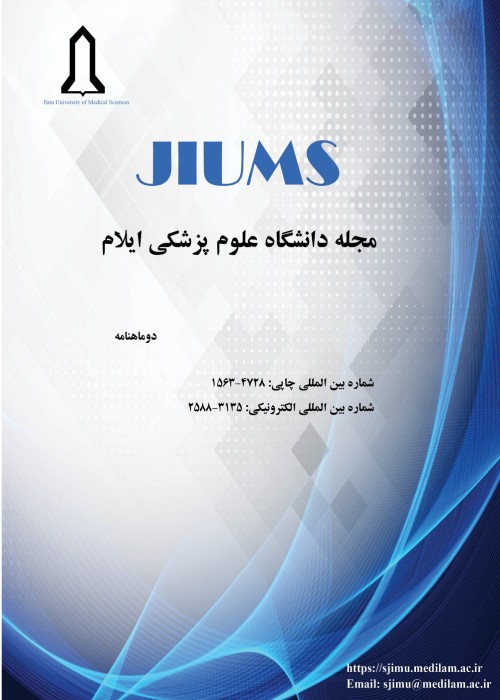Removal of Reactive Blue 19 Dye from Textile Synthetic Wastewater Using Reed Powder
Author(s):
Abstract:
Introduction
Textiledyes are one of the most common organic compounds that by entering the industrial wastewaters cause numerous environmental problems. So, the removal of these pollutants from wastewaters is important. In this study, the efficiency of reed powder in the removal of Reactive Blue19dye from textile synthetic waste water was investigated. Materials and Methods
This research is an experimental study. Target adsorbent was prepared in laboratory scale and pulverized by standard ASTM sieves (60-100 mesh).In this study, the synthetic waste water was prepared with different concentrations of reactive blue19 dye(25, 50 mg/l). The effect of factors such as pH(3-11), amount of adsorbent(0.2-0.8 gr/l) and different time (15-120 min and 24h) were tested during the absorption process. According to studied factors, in total 300 samples were analyzed. For experiments a flask of 250 m L was used as a batch reactor. The residual dye concentration in the samples was measured using a UV/Visible spectrophotometer at 592nm wavelength. The adsorption potential of adsorbent was investigated by Langmuir and Freundlich models. In addition, the pseudo- first order and pseudo-second order kinetics for assessment of adsorption pattern were studied. Findings: The results showed that the highest removal efficiency is at pH3. According to obtained results, maximum removal efficiency was in the first 60 minutes. With increasing initial dye concentration, the removal efficiency decreased. The results showed that with increasing amount ofadsorbentfrom0.4to0.8 gr/100ml, removal efficiency does not change. So that, for concentrations of 25 and 50mg/l, the removal efficiency from 93.12%to95.41%andfrom90.83%to93.96%i ncreased. Dye Adsorption isotherm using reed powder followed the Langmuir isotherm model. Adsorption kinetics data indicating a better fit with the pseudosecond order kinetic.
Discussion &
Conclusions
The obtained results of this study showed that reed powder (in optimal conditions of pH, amount of adsorbent and contact time)is a natural adsorbent of appropriate and effective for the removal of dye. Keywords:
Isotherm , Reed powder , Adsorption , Kinetic
Language:
Persian
Published:
Ilam University of Medical Science, Volume:23 Issue: 7, 2016
Pages:
119 to 131
magiran.com/p1508757
دانلود و مطالعه متن این مقاله با یکی از روشهای زیر امکان پذیر است:
اشتراک شخصی
با عضویت و پرداخت آنلاین حق اشتراک یکساله به مبلغ 1,390,000ريال میتوانید 70 عنوان مطلب دانلود کنید!
اشتراک سازمانی
به کتابخانه دانشگاه یا محل کار خود پیشنهاد کنید تا اشتراک سازمانی این پایگاه را برای دسترسی نامحدود همه کاربران به متن مطالب تهیه نمایند!
توجه!
- حق عضویت دریافتی صرف حمایت از نشریات عضو و نگهداری، تکمیل و توسعه مگیران میشود.
- پرداخت حق اشتراک و دانلود مقالات اجازه بازنشر آن در سایر رسانههای چاپی و دیجیتال را به کاربر نمیدهد.
In order to view content subscription is required
Personal subscription
Subscribe magiran.com for 70 € euros via PayPal and download 70 articles during a year.
Organization subscription
Please contact us to subscribe your university or library for unlimited access!


